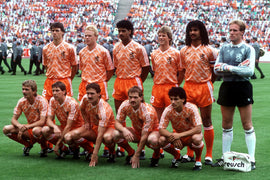
The Rise of Sustainable Fashion and the Boom in Vintage Football Shirts
Sustainable fashion has transformed from a niche movement into one of the most influential forces reshaping the global clothing industry. As consumers become more aware of environmental issues, the demand for ethical and eco-friendly clothing continues to rise. Among the many trends benefiting from this shift, vintage football shirts have emerged as an unexpected star. These retro kits are no longer just collector’s items, they are now symbols of conscious shopping, cultural nostalgia, and sustainable style.
Why Sustainable Fashion Is Growing
More shoppers are questioning how their clothes are made and what impact the fashion industry has on the planet. Concerns about textile waste, fast-fashion pollution, and overconsumption have encouraged people to seek alternatives that are better for the environment. Sustainable fashion promotes quality over quantity, choosing items designed to last and avoiding clothing destined for landfill.
This change in attitude aligns perfectly with the rising popularity of second hand clothing. Thrifting, resale platforms, and vintage stores have become mainstream. Instead of buying cheaply made garments, shoppers are investing in unique pieces that carry character and history. Vintage football shirts fit this mindset perfectly, offering both longevity and originality.
Why Vintage Football Shirts Are a Sustainable Choice
Football shirts might seem like an unusual part of sustainable fashion, but they check every important box. Retro kits are durable, distinctive, and produced in limited numbers. They represent culture, heritage, and sporting history, turning them into wearable collectibles rather than disposable garments.
Buying a vintage football shirt extends the life of an existing product. It prevents waste, reduces the demand for new manufacturing, and cuts down on the environmental footprint associated with modern clothing production. A single vintage shirt saves energy, materials, and water that would have been used to create a brand new one.
The Cultural Boom Behind Retro Football Shirts
The boom in retro football shirts has been impossible to ignore. Once collected quietly by die-hard fans, these shirts have exploded into global fashion. Platforms like The Soccer Archive have led the charge, turning forgotten kits from the 80s, 90s, and early 2000s into highly desirable fashion pieces.
Social media has played a huge role. Instagram and TikTok are full of stylised photos and outfit videos featuring iconic shirts, from the vibrant patterns of 90s Adidas templates to the sleek minimalism of classic Italian kits. Younger generations wear them not just as sportswear, but as bold streetwear statements. This crosses boundaries between fashion, sport, and nostalgia.
Vintage Shirts and Modern Sustainability Values
Wearing a vintage football shirt challenges the throwaway culture of fast fashion. Each shirt tells a story and carries emotional weight, whether it’s a club’s historic season or a design associated with a beloved player. This emotional connection encourages people to keep and treasure their clothing rather than replacing it every season.
A vintage Arsenal favourite or a rare 90s international shirt becomes a conversation piece, a reminder of football history, and a stylish sustainable choice all at once. Retro kits give fans a way to express identity while contributing to a circular fashion system.
How Football Culture Supports Sustainable Fashion
Football has deep roots in community, loyalty, and belonging. Vintage shirts tap into that culture, offering a meaningful way to celebrate the past while supporting sustainable shopping habits. Buyers choose pieces with authenticity and nostalgia, not mass produced items that imitate retro aesthetics without offering real history.
This shift in mindset mirrors the goals of the sustainable fashion movement: valuing craftsmanship, extending product life, and choosing meaningful purchases over impulse buying.
Brands and Clubs Responding to the Trend
As demand grows, many football brands and clubs are adapting. Some are releasing reissues of classic designs, while others are experimenting with recycled materials in new kits. Clubs are even beginning to promote circular economy initiatives, encouraging fans to recycle their old shirts instead of throwing them away.
The success of vintage football shirts proves that sustainability can be profitable, stylish, and culturally relevant. Retro kits have shown brands that consumers are ready for fashion that respects both heritage and the planet.
A Future Built on Sustainable Style
The rise of sustainable fashion shows no sign of slowing down, and the continued boom in vintage football shirts highlights how powerful conscious shopping can be. Retro kits combine individuality, history, and environmental responsibility in a way few garments can match.
The trend proves something important, consumers want clothing with meaning, character, and longevity. By embracing vintage football shirts, shoppers are helping build a future where style doesn’t harm the planet, culture is celebrated, and sustainability becomes part of everyday fashion.
Robert Armin
More stories
The Holland 1988 Shirt
The Holland 1988 Shirt: A Timeless Icon in Football History When we think of iconic football shirts, few are as instantly recognisa...
